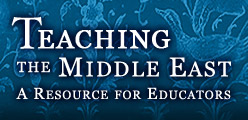Faceless Horde, Mindless Entity, Brute Force
In his Ecclesiastical History of the English Nation, the Venerable Bede (d. 735 CE) described the Muslim invasion of France in 729 CE as a “swarm of Saracens [who] ravaged Gaul.” The same theme is echoed in popular news magazines in vivid and emotive language. The following excerpt is particularly telling example from the August 17, 1987, issue of Time magazine:
They jammed Revolution Avenue in the heart of Tehran last week, a million Iranians raising their fists and shouting as if with one voice, “Revenge! Revenge! Revenge!” The clutches of women dressed in black chadors, the phalanxes of men bearing placards that said down with the U.S.: the angry scene had been played out before. This time, the crowd seemed reinvigorated, its fury fresh and lethal. “Death to America!” they chanted in the near 100˚ heat. Their rage rose higher still…
The following titles of books and articles portray Islam as a monolithic collective and an enraged mob or tidal wave that threatens to consume all that stands in its way: “Beware the Islamic Threat” (Yedidya Atlas, The Jerusalem Post, 14 March 1992); “The Islamic Wave” (Itamar Rabinovich, Washington Quarterly 2.4, August 1979; Judith Miller, The New York Times Magazine, 31 May 1992); “The New Islamic Whirlwind” (Ken Macqueen, Macleans, 1 April 1985). Enraged mobs and tidal waves are faceless, mindless, and overwhelming; they cannot be dealt with using normal measures or forms of rational discourse. Contributing to the hysteria now is the notion that “Islam” has (or is attempting to acquire) a nuclear arsenal. Using the same frame of analysis, we do not seem to be as concerned that Christianity, Judaism, and Hinduism also have the bomb.
Supporting Links:
Hadar, Leon T. “The "Green Peril: Creating the Islamic Fundamentalist Threat.” CATO Institute. Link to resource![]() (accessed June 24, 2010).
(accessed June 24, 2010).
“Stereotypes of Arabs and Muslims.” Wikipedia. Link to resource![]() (accessed June 24, 2010).
(accessed June 24, 2010).

 John Woods
John Woods
Professor of Iranian and Central Asian History and of Near Eastern Languages and Civilizations, The University of Chicago
 Alexander Barna
Alexander Barna
Outreach Coordinator, Center for Middle Eastern Studies, University of Chicago
Guiding Questions
1. What trope is Woods citing in these passages and to what extent do these examples constitute a “preexistent and predictable” pattern of vilification?
2. In the last line of this passage, Woods accuses that “we do not seem to be as concerned” that others have the bomb. Yet, he ignores our strained efforts with North Korea in recent years. Explain why he purposely excluded mention of North Korea in the context of the relationship between the government and the people of North Korea, and the government of Iran and its people.


 Print Page
Print Page
